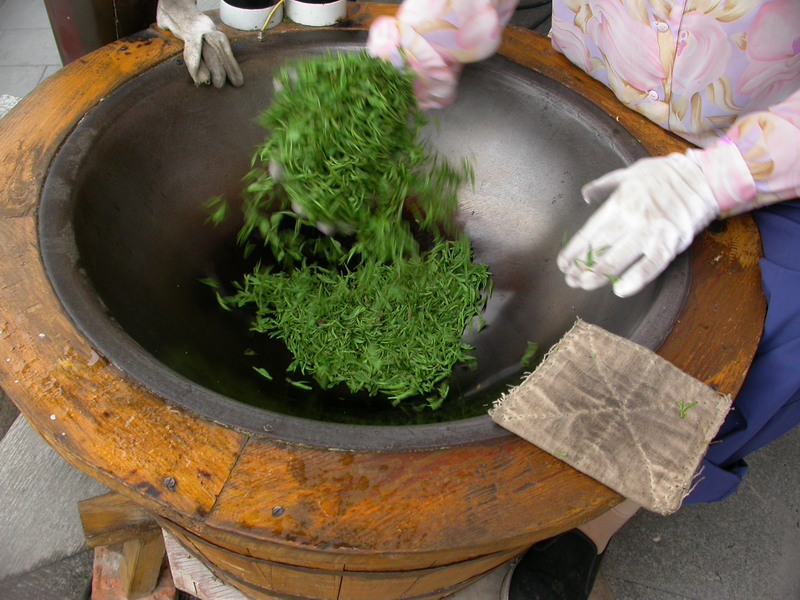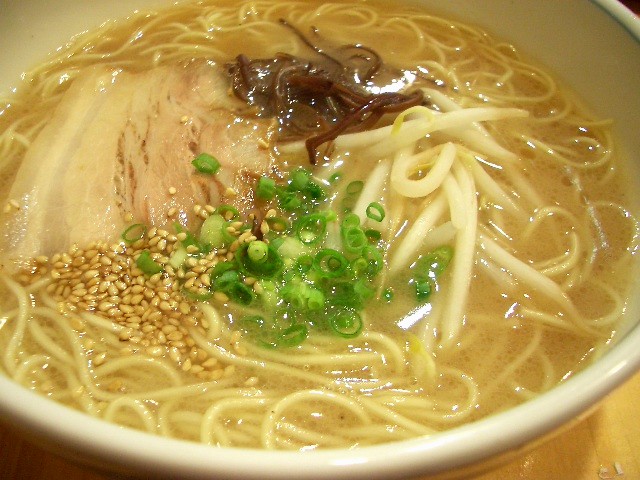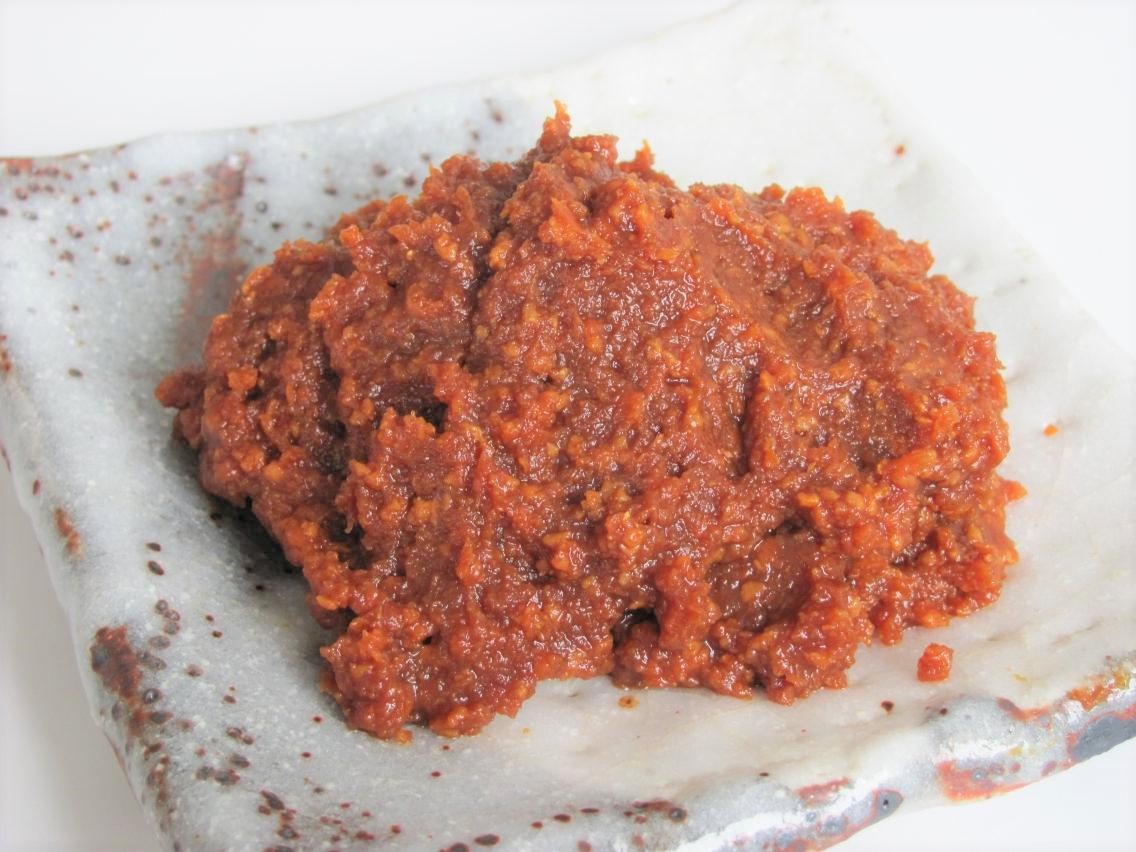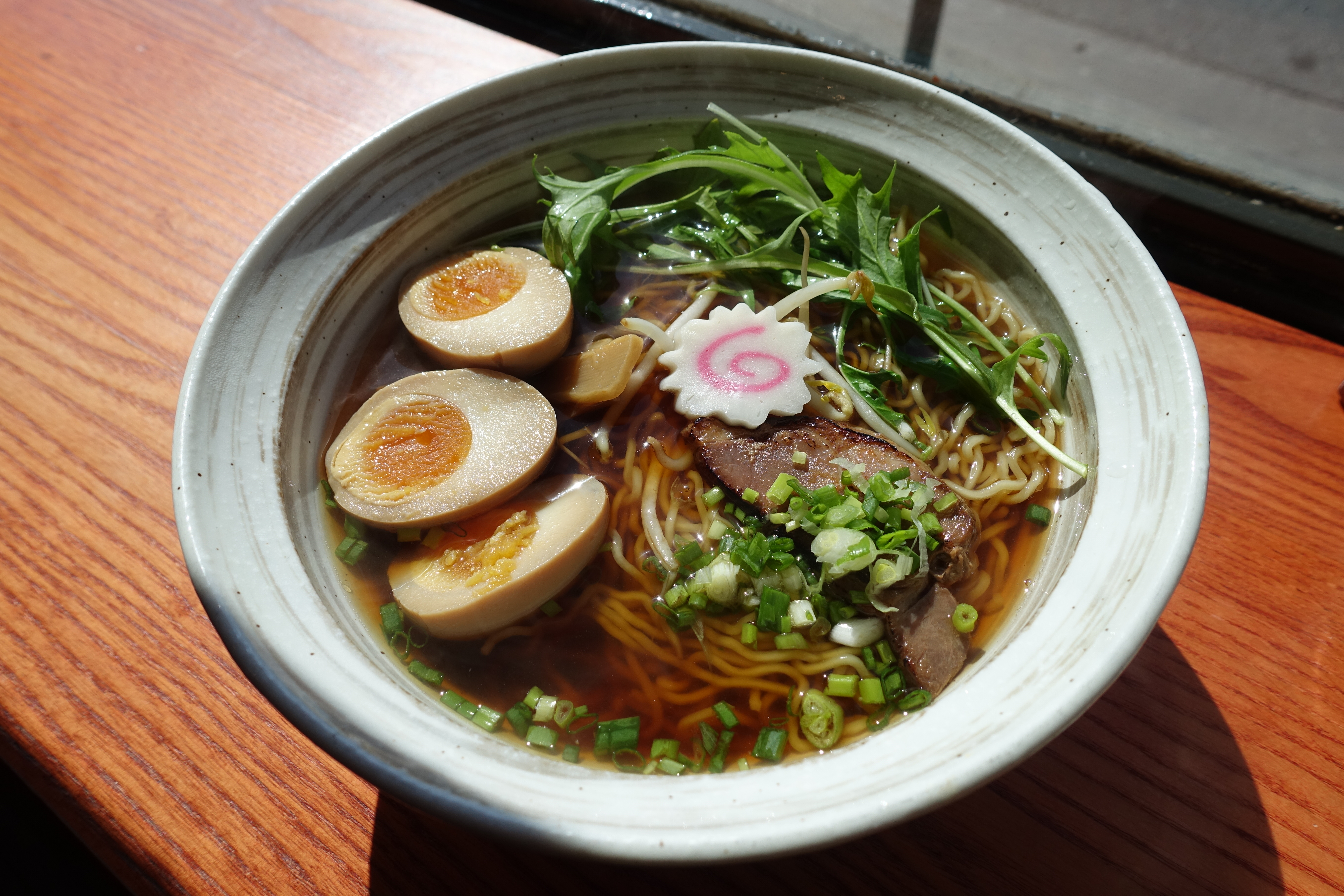|
Sapporo Ichiban
is a brand of instant noodles (primarily ramen) manufactured by Sanyo Foods of Maebashi, Gunma, Japan. Sapporo Ichiban noodles are also manufactured in Garden Grove, California, for the United States and Canadian market. Sapporo Ichiban has also found a market outside Japan, most notably with consumers in Hong Kong, the United States, Mexico, Argentina and Canada. Sapporo Ichiban literally means "Sapporo's number one oodle, coined by future company president Takeshi Ida after he was particularly impressed with Sapporo's local ramen. Facilities and manufacturing Sanyo Foods had previously kept their headquarters, and R&D all in their original town of Maebashi city, Gunma prefecture, but their headquarters have legally moved to Minato-ku, Tokyo. They have built their plants for domestic products in Gunma, Chiba, Nara, and Fukuoka. There is a small sales branch in Sapporo. Products sold in the United States are made in Garden Grove, California. Products Ramen Ramen flavor ... [...More Info...] [...Related Items...] OR: [Wikipedia] [Google] [Baidu] |
Instant Noodles
Instant noodles, or instant ramen, is a type of food consisting of noodles sold in a precooked and dried block with flavoring powder and/or seasoning oil. The dried noodle block was originally created by flash-frying cooked noodles, which is still the dominant method used in Asian countries; air-dried noodle blocks are favored in Western countries. Dried noodle blocks are designed to be cooked or soaked in boiling water before eating. Ramen, a Japanese adaptation of Chinese noodle soup, is sometimes used as a descriptor for instant noodle flavors by some Japanese manufacturers. It has become synonymous in the United States with all instant noodle products. Instant noodles were invented by Momofuku Ando of Nissin Foods in Japan. They were launched in 1958 under the brand name Chikin Ramen. In 1971, Nissin introduced Cup Noodles, the first cup noodle product. Instant noodles are marketed worldwide under many brand names. The main ingredients in instant noodles are flour, sta ... [...More Info...] [...Related Items...] OR: [Wikipedia] [Google] [Baidu] |
Tokyo
Tokyo, officially the Tokyo Metropolis, is the capital of Japan, capital and List of cities in Japan, most populous city in Japan. With a population of over 14 million in the city proper in 2023, it is List of largest cities, one of the most populous urban areas in the world. The Greater Tokyo Area, which includes Tokyo and parts of six neighboring Prefectures of Japan, prefectures, is the most populous metropolitan area in the world, with 41 million residents . Lying at the head of Tokyo Bay, Tokyo is part of the Kantō region, on the central coast of Honshu, Japan's largest island. It is Japan's economic center and the seat of the Government of Japan, Japanese government and the Emperor of Japan. The Tokyo Metropolitan Government administers Tokyo's central Special wards of Tokyo, 23 special wards, which formerly made up Tokyo City; various commuter towns and suburbs in Western Tokyo, its western area; and two outlying island chains, the Tokyo Islands. Although most of the w ... [...More Info...] [...Related Items...] OR: [Wikipedia] [Google] [Baidu] |
Stir Frying
Stir frying ( zh, c= 炒, p=chǎo, w=ch'ao3, cy=cháau) is a cooking technique in which ingredients are fried in a small amount of very hot oil while being stirred or tossed in a wok. The technique originated in China and in recent centuries has spread into other parts of Asia and the West. It is similar to sautéing in Western cooking technique. Wok frying may have been used as early as the Han dynasty (206 BC – 220 AD) for drying grain, not for cooking. It was not until the Ming dynasty (1368–1644) that the wok reached its modern shape and allowed quick cooking in hot oil. However, there is research indicating that metal woks and stir-frying of dishes were already popular in the Song dynasty (960–1279), and stir-frying as a cooking technique is mentioned in the 6th-century AD Qimin Yaoshu. Stir frying has been recommended as a healthy and appealing method of preparing vegetables, meats, and fish, provided calories are kept at a reasonable level. The English-lan ... [...More Info...] [...Related Items...] OR: [Wikipedia] [Google] [Baidu] |
Chow Mein
''Chow mein'' ( and , ; Cantonese Yale: ''cháaumihn'', Pinyin: ''chǎomiàn'') is a dish of Chinese stir-fried noodles with vegetables and sometimes meat or tofu. Over the centuries, variations of ''chǎomiàn'' were developed in many regions of China; there are several methods of frying the noodles and a range of toppings can be used. It was introduced in other countries by Chinese immigrants. The dish is popular throughout the Chinese diaspora and appears on the menus of most Chinese restaurants abroad. It is particularly popular in India, Nepal, the UK, and the US. Etymology 'Chow mein' is the Americanization of the Chinese term for fried noodles (). Its pronunciation comes from the Cantonese pronunciation "chaomin"; the term first appeared in English (US) in 1906. The term 'chow mein' means 'stir-fried noodles', also loosely translated as "fried noodles" in English, ''chow'' () meaning 'stir-fried' (or "sautéed") and ''mein'' () meaning "noodles". Regional cuisin ... [...More Info...] [...Related Items...] OR: [Wikipedia] [Google] [Baidu] |
Yakisoba
(, , ) is a Japanese noodle Stir frying, stir-fried dish. Usually, soba noodles are made from buckwheat flour, but soba in are Chinese-style noodles () made from wheat flour, typically flavored with a condiment similar to Worcestershire sauce. The dish first appeared in food stalls in Japan around the 1930s. Preparation is prepared by frying ramen-style wheat noodles with bite-sized pork and finely chopped vegetables like cabbage, onions, bean sprouts, and carrots. It is then flavored with Worcestershire sauce#Japan, Japanese-style Worcestershire sauce, salt, and pepper. It can be served with a variety of Garnish (food), garnishes, such as ''aonori'' (seaweed powder), ''beni shōga'' (shredded pickled ginger), ''katsuobushi'' (bonito fish flakes), or Mayonnaise#Japan, Japanese-style mayonnaise. Serving can be served on a plate either as a main dish or a side dish. In Japan, noodles piled into a bun sliced down the middle and garnished with mayonnaise and shreds of red pic ... [...More Info...] [...Related Items...] OR: [Wikipedia] [Google] [Baidu] |
Shrimp
A shrimp (: shrimp (American English, US) or shrimps (British English, UK)) is a crustacean with an elongated body and a primarily Aquatic locomotion, swimming mode of locomotion – typically Decapods belonging to the Caridea or Dendrobranchiata, although some Shrimp#Non-decapods, crustaceans outside of this order are also referred to as "shrimp". Any small crustacean may also be referred to as "shrimp", regardless of resemblance. More narrow definitions may be restricted to Caridea, to smaller species of either of the aforementioned groups, or only the Marine life, marine species. Under a broader definition, ''shrimp'' may be synonymous with prawn, covering stalk-eyed swimming crustaceans with long, narrow muscular tails (Abdomen#Arthropoda, abdomens), long whiskers (Antenna (biology), antennae), and slender, Biramous, biramous legs. They swim forward by paddling the swimmerets on the underside of their abdomens, although their escape response is typically repeated flicks wit ... [...More Info...] [...Related Items...] OR: [Wikipedia] [Google] [Baidu] |
Beef
Beef is the culinary name for meat from cattle (''Bos taurus''). Beef can be prepared in various ways; Cut of beef, cuts are often used for steak, which can be cooked to varying degrees of doneness, while trimmings are often Ground beef, ground or minced, as found in most hamburgers. Beef contains protein, iron, and vitamin B12. Along with other kinds of red meat, high consumption is associated with an increased risk of colorectal cancer and coronary heart disease, especially when processed meat, processed. Beef has a high Environmental impact of meat production, environmental impact, being a primary driver of deforestation with the highest greenhouse gas emissions of any agricultural product. In prehistoric times, humans hunted aurochs and later domesticated them. Since that time, numerous beef cattle, breeds of cattle have been Selective breeding, bred specifically for the quality or quantity of their meat. Today, beef is the third most widely consumed meat in the world, aft ... [...More Info...] [...Related Items...] OR: [Wikipedia] [Google] [Baidu] |
Chicken
The chicken (''Gallus gallus domesticus'') is a domesticated subspecies of the red junglefowl (''Gallus gallus''), originally native to Southeast Asia. It was first domesticated around 8,000 years ago and is now one of the most common and widespread domesticated animals in the world. Chickens are primarily kept for chicken as food, their meat and egg as food, eggs, though they are also kept as pets. As of 2023, the global chicken population exceeds 26.5 billion, with more than 50 billion birds produced annually for consumption. Specialized breeds such as broilers and laying hens have been developed for meat and egg production, respectively. A hen bred for laying can produce over 300 eggs per year. Chickens are social animals with complex vocalizations and behaviors, and cultural references to chickens, feature prominently in folklore, religion, and literature across many societies. Their economic importance makes them a central component of global animal husbandry and agricu ... [...More Info...] [...Related Items...] OR: [Wikipedia] [Google] [Baidu] |
Tonkotsu
is a ramen dish that originated in Kurume, Fukuoka Prefecture, Japan, and is a specialty dish on the island of Kyushu. The broth for tonkotsu ramen is based on pork bones, which is what the word means in Japanese. It is prepared by boiling the bones in water for up to eighteen hours, at which point the soup becomes cloudy in appearance. Additional broth ingredients can include onion, garlic, spring onions, ginger, pork back fat, pig's trotters, oil, and chicken carcass. The dish is traditionally topped with chāshū (sliced pork belly), and additional ingredients can include kombu, kikurage, shōyu, chili bean paste, and sesame seeds. The traditional preparation method for tonkotsu ramen is for the noodles to be hard in the center. Some ramen shops allow customers to select the level of firmness, including ''futsu'' for regular or standard, ''harigane'' for very hard, ''barikata'' for al dente, and ''yawamen'' for soft. Some restaurants also provide a second order of noo ... [...More Info...] [...Related Items...] OR: [Wikipedia] [Google] [Baidu] |
Salt
In common usage, salt is a mineral composed primarily of sodium chloride (NaCl). When used in food, especially in granulated form, it is more formally called table salt. In the form of a natural crystalline mineral, salt is also known as rock salt or halite. Salt is essential for life in general (being the source of the essential dietary minerals sodium and chlorine), and saltiness is one of the basic human tastes. Salt is one of the oldest and most ubiquitous food seasonings, and is known to uniformly improve the taste perception of food. Salting, brining, and pickling are ancient and important methods of food preservation. Some of the earliest evidence of salt processing dates to around 6000 BC, when people living in the area of present-day Romania boiled spring water to extract salts; a salt works in China dates to approximately the same period. Salt was prized by the ancient Hebrews, Greeks, Romans, Byzantines, Hittites, Egyptians, and Indians. Salt became a ... [...More Info...] [...Related Items...] OR: [Wikipedia] [Google] [Baidu] |
Miso
is a traditional Japanese seasoning. It is a thick paste produced by fermenting soybeans with salt and kōji (the fungus ''Aspergillus oryzae''), and sometimes rice, barley, seaweed, or other ingredients. It is used for sauces and spreads; pickling vegetables, fish, or meats; and mixing with dashi soup stock to serve as miso soup, a Japanese culinary staple food. Miso is high in protein and rich in minerals, and it played an important nutritional role in feudal Japan. Miso is widely used in both traditional and modern cooking in Japan, and as of 2018 had been gaining worldwide interest. Typically, miso is salty, but its flavor and aroma depend on the ingredients and fermentation process. Different varieties of miso have been variously described as salty, sweet, earthy, fruity, or savory. History The origin of miso of Japan is not completely clear. *Grain and fish misos had been manufactured in Japan since the Neolithic era (Jōmon period, 14,000–300 BC). These are ca ... [...More Info...] [...Related Items...] OR: [Wikipedia] [Google] [Baidu] |
Soy Sauce
Soy sauce (sometimes called soya sauce in British English) is a liquid condiment of China, Chinese origin, traditionally made from a fermentation (food), fermented paste of soybeans, roasted cereal, grain, brine, and ''Aspergillus oryzae'' or ''Aspergillus sojae'' Mold (fungus), molds. It is recognized for its saltiness and pronounced umami taste. Soy sauce was created in its current form about 2,200 years ago during the Western Han dynasty of ancient China. Since then, it has become an important ingredient in List of Asian cuisines, East and Cuisine of Southeast Asia, Southeast Asian cooking as well as a condiment worldwide. Use and storage Soy sauce can be added directly to food, and is used as a dip or Salt#Edible salt, salt flavor in cooking. It is often eaten with rice, Japanese noodles, noodles, and sushi or sashimi, or can also be mixed with ground wasabi for dipping. Bottles of soy sauce for the salty seasoning of various foods are common on restaurant tables in many co ... [...More Info...] [...Related Items...] OR: [Wikipedia] [Google] [Baidu] |










